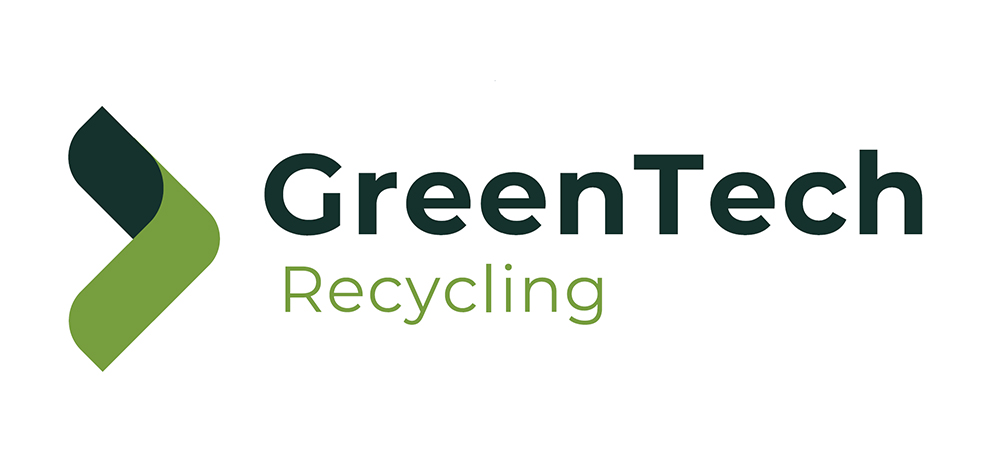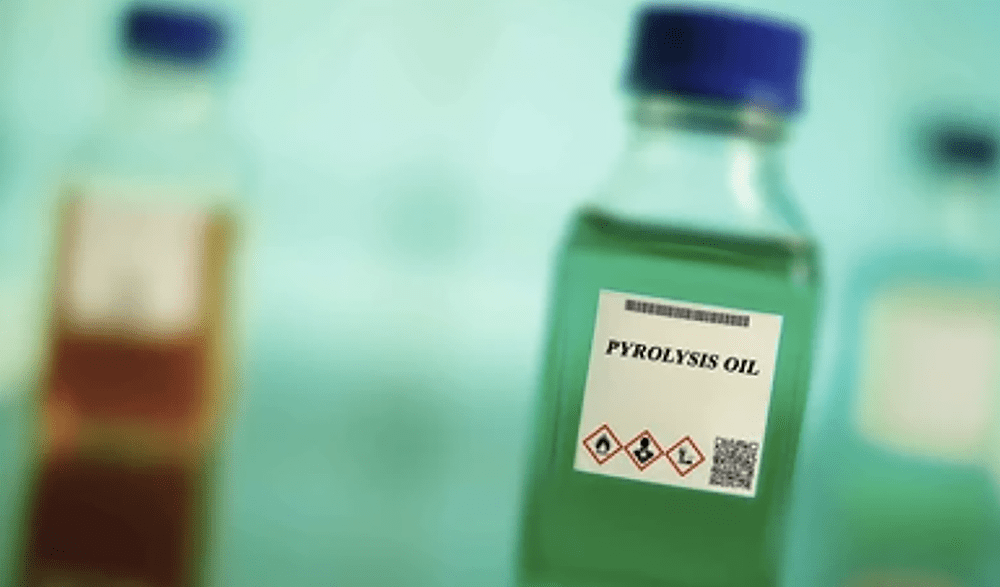This report on the recycling of residual materials is authored by Prof. Dr. Dr. h.c. Walter Kaminsky, Institute of Technical and Macromolecular Chemistry, University of Hamburg. The text is translated from German.
The expert has been involved in the thermal recycling of old tires and plastic waste for more than 30 years, has researched this, visited several relevant facilities worldwide and published books and specialist articles.
Recycling of residual materials is crucial for a sustainable business. On the one hand, the waste is disposed of in an environmentally friendly way and on the other hand, valuable raw materials are recycled. The recycling of used tires plays a special role here, as they can neither be burned in conventional waste incineration plants nor thrown away in landfills, to the extent that it is still possible in some countries. In Germany alone, more than 500,000 tons of used tires are generated each year, most of which are stored, burned in cement and steel plants, or transported in decreasing quantities. Used tires are made from valuable raw materials such as rubber (50-60% by weight) and RuB (30-40% by weight), which are made from petroleum products, as well as steel cord (10-15% by weight).
By thermolysis or pyrolysis, rubber can be broken down into low molecular weight hydrocarbons by heating in the absence of air, which can be purified and marketed by rectification. Thermal decomposition of the polymers requires energy, which must be transferred to the poorly heat-conducting rubber material. The various processes differ in the technology for delivering heat.
The Pyrum Thermolysis Recycling Process uses an elegant process to transfer heat to the rubber granules. In the technical reactor, which the expert visited in November 2015, the granules obtained from used tires are fed from above into a cylindrical pyrolysis reactor through a lock. It then slides down through five segments of the reactor, where in each segment it is pyrolyzed by 48 electrically heated metal plates on the walls. This process is repeated in the following segments. This arrangement achieves complete degradation of the rubber granules. The gas and oil obtained through fission are drawn off in a lower cone in the reactor and the RU (responsible unit) is discharged at the bottom.
This new process not only enables continuous thermolysis of shredded old tires, but also provides uniform product quality through the good and predictable heat transfer, which is crucial for marketing. By transporting the rubber material under gravity from top to bottom, no mechanically moving and vulnerable transport devices are required.
During thermolysis, 10-15 wt% gas, 50-55 wt% oil and 35-40 wt% coke are created from the rubber granules used with the Pyrum Process. The gas can be burned in a gas generator and used to generate electricity. The high quality oil is the main product and can be marketed as a chemical feedstock or heating and fuel.
The expert also believes that the coke is a valuable, perhaps even the most valuable recycled product. Thanks to the good and uniform temperature control in the process and the fact that rubber granules without steel cords are used, the coke is of particularly high quality. The coke mainly consists of the high-quality Aktivru, which was used in tire production. Due to the special procedure of the Pyrum Process, only a small amount of Pyrolysis was added. Such coal should be of better quality than other pyrolysis processes and be easy to market in the rubber or pigment industry.
Due to the stated reasons and the relatively simple and safe process, the expert considers the Pyrum thermolysis recycling process to be particularly economically promising. The process should also be suitable for thermal recycling of plastic waste.
The original text in German:
Der Gutachter hat sich seit mehr als 30 Jahren mit dem thermischen Recycling von Altreifen und Kunststoffabfällen beschäftigt, dazu Forschung betrieben, mehrere entsprechende Anla gen weltweit besichtigt, Bucher und Fachartikel herausgegeben.
Zum nachhaltigen Wirtschaften ist das Recycling von Reststoffen unerlässlich. Es werden dadurch einerseits die Abfälle umweltfreundlich entsorgt und andererseits wertvolle Rohstof fe zuruckgewonnen. Eine besondere Rolle spielt dabei das Recycling von Altreifen, da diese weder in ublichen Mullverbrennungsanlagen verbrannt noch auf Deponien, soweit dies in den Ländern uberhaupt noch möglich ist, abgelagert werden können. Alleine in Deutschland fallen jährlich mehr als 500 000 Tonnen an Altreifen an, die zum groBen Teil gelagert, mit ab nehmender Menge in Zement-und Stahlwerken verbrannt oder verschifft werden. Dabei be stehen Altreifen aus wertvollen Rohstoffen wie Gummi (50-60 Gew.%) und RuB (30-40 Gew.%), die aus Erdölprodukten hergestellt werden, sowie aus Stahlcord (10-15 Gew.%).
Durch Thermolyse oder Pyrolyse, lässt sich Gummi durch Erhitzen unter Luftausschluss wie der in niedermolekulare Kohlenwasserstoffe aufspalten, die durch Rektifikation gereinigt und vermarktet werden können. Zum thermischen Spalten der Polymere wird Energie benötigt, die an das schlecht wärmeleitende Gummimaterial herangebracht werden muss. In der Technik för die Wärmezufuhr unterscheiden sich die verschiedenen Verfahren.
Der Pyrum-Thermolysis-Recycling-Prozess nutzt för die Wärmeubertragung andas Gummig ranulat ein elegantes Verfahren. In dem technischen Reaktor, den der Gutachter im Novem ber 2015 besichtigt hat, wird das aus Altreifen gewonnene Granulat von oben in einen zylind rischen Pyrolysereaktor durch eine Schleuse eingebracht. Es rutscht dann durch fönf Segmente des Reaktors nach unten wobei es in jedem Segment durch 48 elektrisch beheizte Metall platten an den Wänden pyrolysiert wird. Dieser Vorgang wiederholt sich in den folgenden Segmenten. Durch diese Anordnung wird eine vollständige Zersetzung des Gummigranulates erreicht. In einem unteren Konus des Reaktors wird das durch Spaltung gewonnene Gas und Öl abgezogen und ganz unten der Ru ausgetragen.
Dieses neue Verfahren ermöglicht nicht nur eine kontinuierliche Thermolyse von zerkleiner ten Altreifen, sondern liefert durch den guten und berechenbaren Wärmeubergang auch eine gleichmämge Produktqualität, die fur eine Vermarktung entscheidend ist. Durch den Trans port des Gummimaterials unter der Schwerkraft von oben nach unten werden keine mecha nisch bewegten und anfälligen Transporteinrichtungen benötigt.
Bei der Thermolyse entstehen aus dem eingesetzten Gummigranulat nach dem Pyrum Prozess 10-15 Gew. % Gas, 50-55 Gew. % Öl und 35-40 Gew. Koks. Das Gas kann in einem Gas generator verbrannt und zur Stromerzeugung genutzt werden, Das hochwertige Öl stellt das Hauptprodukt dar und kann als Chemierohstoff oder Heiz-und Kraftstoff vermarktet werden.
Der Gutachter hält auch den Koks fur ein wertvolles, vielleicht sogar das wertvollste zuruck gewonnene Produkt. Durch die gute und gleichmä ige Temperaturfuhrung im Prozess und dadurch, dass Gummigranulat ohne Stahlcordanteile eingesetzt wird, besitzt der Koks eine besonders hohe Qualität. Der Koks besteht ganz wesentlich aus dem hochwertigen Aktivru , der bei der Reifenherstellung verwendet wurde. Durch die besondere Verfahrensweise des Pyrum-Prozesses ist nur wenig Pyrolyseru dazugekommen. Ein solcher Ru sollte eine besse re Qualität haben als von anderen Pyrolyseprozessen und sich gut in der Gummi oder Pig mentindustrie vermarkten lassen.
Auf Grund der aufgefuhrten Grunde und wegen der relativ einfachen und sicheren Prozess fuhrung hält der Gutachter den Pyrum-Thermolysis-Recycling-Process fur wirtschaftlich be sonders aussichtsreich. Der Prozess sollte ebenfalls fur die thermische Verwertung von Kunst stoffabfällen geeignet sein.



